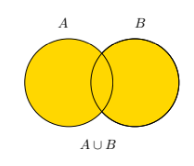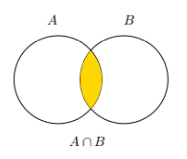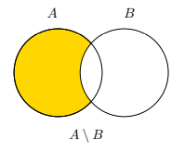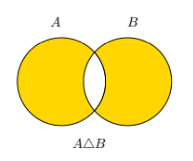Sets
1/15
Name | Mastery | Learn | Test | Matching | Spaced |
|---|
No study sessions yet.
16 Terms
Set
A set is a collection of distinct objects, called elements, denoted by curly brackets {}.
A = {1,2,3,4,5}
Element
An element is an object that belongs to a set, denoted by…
x ∈ A
(x is an element of set A).
Subset
A set A is a subset of set B if every element of A is also an element of B, denoted A ⊆ B.
If A ⊆ B and A ≠ B, then A is a proper subset of B - A ⊂ B
All sets are also subsets of themselves! And the empty set is a subset of all sets!
Natural Numbers
The set of positive integers denoted as N.
N = {1, 2, 3, 4, . . .}
Integers
The set of all integers, including positive, negative, and zero, denoted as Z.
Z = {. . . , −3, −2, −1, 0, 1, 2, 3, . . . }
Rational Numbers
The set of numbers that can be expressed as a fraction n/m where n, m ∈ Z and m ≠ 0, denoted as Q
Q = { m/n : m,n ∈ Z and n ≠ 0}
Real Numbers
The set of numbers that can be expressed with an infinite decimal expansion, denoted as R.
Complex Numbers
The set of numbers expressed in the form a + bi where a, b ∈ R and i is the imaginary unit, denoted as C.
Empty set
A set with no elements in it is called an empty set, denoted by ∅.
∅ = {}
Intervals
[ = greater than equal to
] = less than equal to
{ = greater than
} = less than
![<p>[ = greater than equal to </p><p>] = less than equal to</p><p>{ = greater than</p><p>} = less than</p>](https://knowt-user-attachments.s3.amazonaws.com/482315cf-10f0-4842-9945-2717cb139fd3.png)
Union
The set of all elements that are in either set A or set B, denoted A ∪ B.

Intersection
The set of all elements that are in both set A and set B, denoted A ∩ B.

Set Difference
The set of elements that are in set A but not in set B, denoted A \ B.

Symmetric Difference
The set of elements that are in either set A or set B but not in both, denoted A △ B.

Complement
The set of all elements in a universal set that are not in set A, denoted Ac.
Cartesian Product
A and B are sets, the Cartesian product of A and B is the set of all ordered pairs (a, b) with a ∈ A and b ∈ B. We denote this by A×B so
A × B = {(a, b) : a ∈ A and b ∈ B}
{1, 2} × {1, 2, 3} = {(1, 1),(1, 2),(1, 3),(2, 1),(2, 2),(2, 3)}
{1, 2, 3} × {1, 2} = {(1, 1),(1, 2),(2, 1),(2, 2),(3, 1),(3, 2)}